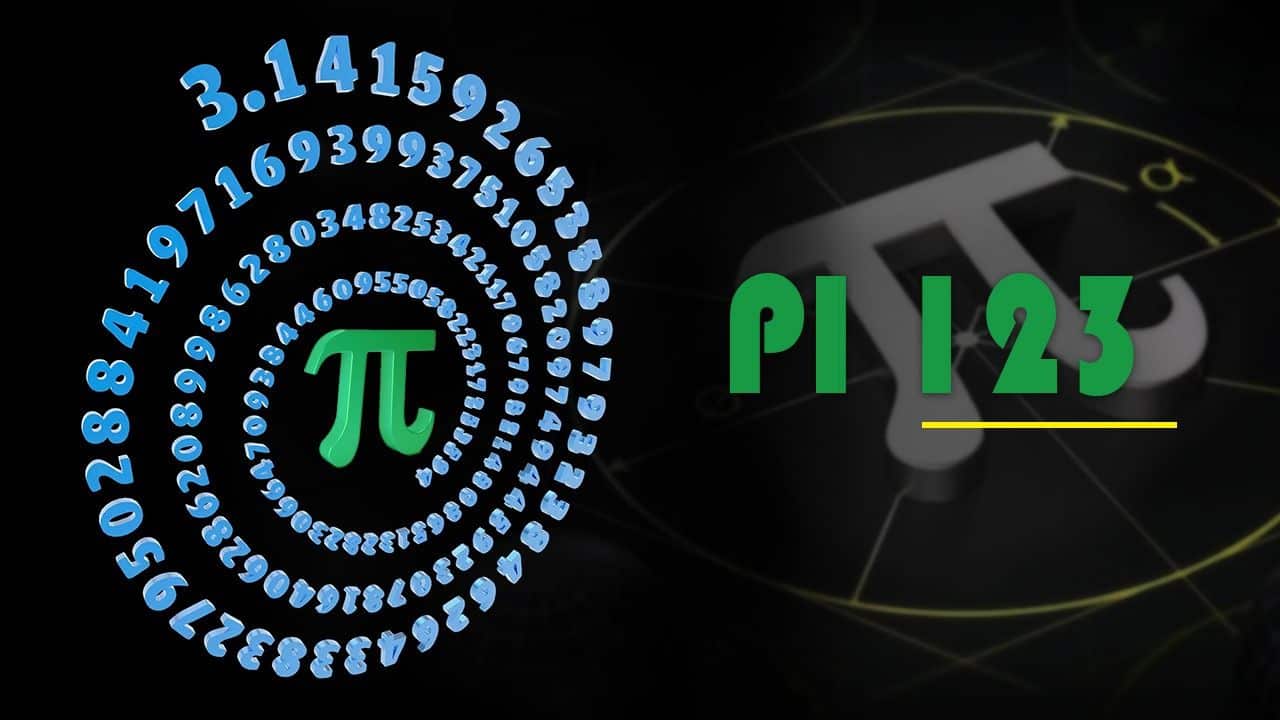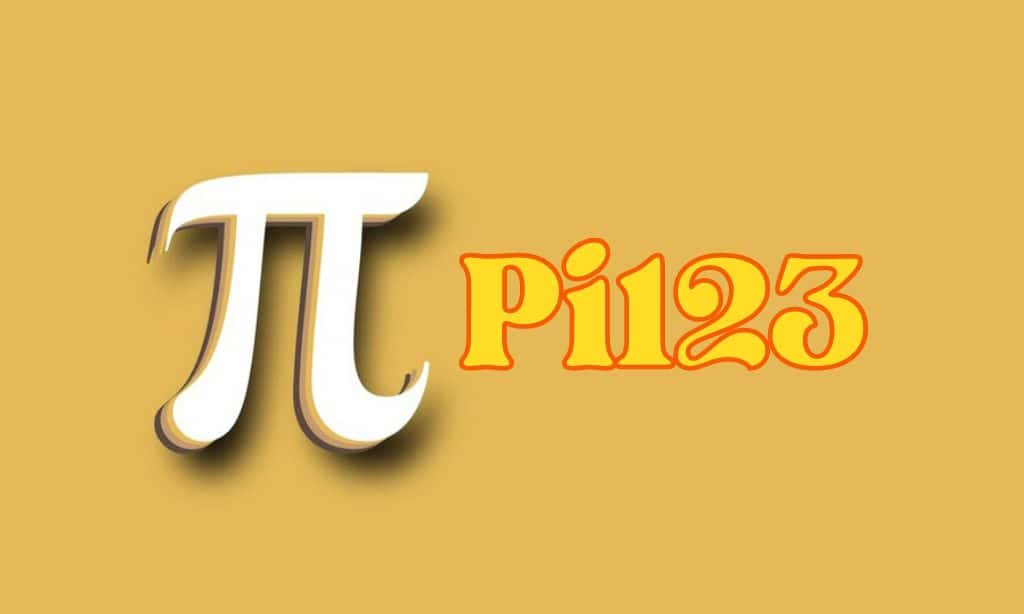Pi123, or the Pi sequence, is a mathematical constant representing the ratio of a circle’s circumference to its diameter. It is a fundamental constant in various domains, including theoretical and practical applications. The Pi sequence is an advanced authentication method that combines the mathematical constant Pi with numbers in a unique and user-friendly way to generate secure access codes. This method includes an extra layer of security to online accounts, making it difficult for unauthorized users to gain access.
Pi sequence offers unmatched speed and accuracy, enabling users to perform calculations efficiently. Additionally, Pi123’s expansive formula library and customization options give users unparalleled flexibility. It connects to users’ bank accounts, credit cards, retirement accounts, and other financial institutions to provide a centralized view of financial data. The pi sequence is a powerful tool with notable significance in various industries due to its ability to simplify complex mathematical calculations.
Content Highlights
- Pi123 is a mathematical constant that shows the ratio of a circle’s circumference to its diameter, and it is used in various domains, including theoretical and practical applications.
- The Pi sequence is an advanced authentication method that combines the mathematical constant Pi with numbers to generate secure access codes, adding an extra layer of security to online accounts.
- It offers unmatched speed and accuracy, an expansive formula library, and customization options, simplifying complex mathematical calculations.
What is Pi123?
Pi123 is an advanced authentication method that combines the mathematical constant Pi (π) with numbers in a unique and user-friendly way to generate secure access codes. This method was designed to add a security layer to your online accounts, making it difficult for unauthorized users to gain access.
Pi sequence is derived from the same circle constant as Pi but with a slightly different formula. Instead of taking the ratio of a circle’s circumference to its diameter (as in the case of Pi), the Pi sequence takes the balance of a circle’s perimeter to its radius. This unique formula allows for creating secure access codes that are difficult to guess or hack.
How It Is Calculated
To calculate a Pi123 code, the user must input a few pieces of information. First, they need to select a number between 1 and 9. This number will be used as the starting point for the code.
Next, the user must select a sequence of digits from Pi123’s unique formula. This sequence is based on the number they set in the previous step. For example, if they selected the number 3, they would use the sequence of digits corresponding to the number 3 in Pi123’s formula.
Finally, the user must combine the starting number and the sequence of digits to create their Pi123 code. This code is unique to the user and can be used to secure their online accounts.
In summary, the Pi sequence is an advanced authentication method that uses a unique formula based on the mathematical constant Pi to generate secure access codes. By combining a starting number with a sequence of digits from Pi123’s formula, users can create a code that is difficult to guess or hack.
Applications of Pi123 in the Real World
Pi123, also known as “123,” is a mathematical constant with numerous applications in various fields. Here are some examples of how the Pi sequence is used in the real world:
Geometry and Trigonometry
The Pi sequence is a fundamental concept in geometry and trigonometry. It is applied to determine the circumference and area of circles, as well as the volume and surface area of spheres. In trigonometry, the Pi sequence calculates the sine, cosine, and tangent of angles.
Physics
The pi sequence is used in physics to calculate the frequency and wavelength of waves. It is also used in the equations that describe the behavior of fluids, such as the Navier-Stokes equations.
Engineering
The pi sequence is used in engineering to design and analyze structures, such as bridges and buildings. It is also used in the design and analysis of mechanical systems, such as engines and turbines.
Computer Science
It is used in computer science to generate random numbers, which are used in cryptography and other applications. It is also used in algorithms for numerical analysis and optimization.
Cryptography
The Pi sequence is used in cryptography to generate random numbers for encryption and decryption. It is also used in algorithms for digital signatures and key exchange.
In short, the Pi sequence has numerous applications in various fields, including geometry, physics, engineering, computer science, and cryptography. Its importance and relevance in these fields make it a fundamental concept that is widely used and studied. In addition, you can also read an article on- What You Need For Success in A Data Science Career
Exploring Pi123 Beyond Numbers
Pi123 is a unique mathematical constant that has captured the attention of mathematicians and enthusiasts alike. While its numerical value is intriguing, there is more to Pi123 than just its digits. In this section, we will explore the history and significance of Pi123, as well as its irrationality and infinite digits.
History and Significance of Pi123
Pi has been studied for thousands of years, with ancient civilizations such as the Babylonians and Egyptians approximating its value. Pi123, on the other hand, is a relatively new concept that has only gained attention in recent years. It is a transcendental number that begins with the first three digits of pi (3.14) and continues with the consecutive digits “123”.
The Pi sequence has significant mathematical implications, particularly in the field of number theory. It has been used to study continued fractions and the distribution of prime numbers. Additionally, it has been utilized in cryptography and computer science.
Irrationality and Infinite Digits
Like pi, Pi123 is an irrational number, meaning it cannot be expressed as a fraction of two integers. It has an infinite number of digits that continue without repetition or pattern. While the value of the Pi sequence has yet to be fully calculated, it is known to have at least trillions of digits.
The irrationality of the Pi sequence has led to its use in random number generation and the testing of algorithms. Its infinite digits have also been used in art and music, with artists creating visual and auditory representations of Pi123’s digits.
In short, the Pi sequence is more than just a mathematical constant with an intriguing numerical value. Its history, significance, irrationality, and infinite digits make it a fascinating subject of study and exploration beyond just its numerical value.
Easy Ways to Remember Pi123
Remembering Pi123 might seem daunting, but with the right techniques and mnemonics, it can be a breeze. Here are some easy ways to remember the Pi sequence.
Techniques and Mnemonics
One effective technique for memorizing the Pi sequence is to use a memory palace. A memory palace is a mental space that you construct in your mind and then fill with vivid images that represent the numbers you want to remember. You can create a memory palace for the Pi sequence by associating each digit with a specific idea or object.
Another mnemonic device that can be helpful is to use a song or poem to remember the numbers. For example, you could create a rhyme incorporating the digits of Pi123, such as “One, two, three, Pi, that’s the sequence we all know and see.”
Fun Facts and Trivia
Did you know that the Pi sequence is not just a random sequence of numbers? It is a unique authentication method that combines the mathematical constant Pi (π) with numbers in a user-friendly way to generate secure access codes. This method was designed to add a security layer to online accounts, making it difficult for unauthorized users to gain access.
The Pi sequence has been generating much buzz lately, for good reason. It is a revolutionary product that offers an easy and safe way to protect your online accounts. Whether you are a tech-savvy individual or just someone who wants to keep their information safe, the Pi sequence is worth checking out.
In short, by using techniques and mnemonics, as well as learning some fun facts and trivia, remembering Pi123 can be a fun and engaging process. So why not give it a try and see what you can accomplish? Additionally, you can also read about- How NCERT 11th Maths Solutions will Help You Get Good Grades?
Problem Solving Using Pi123
The Pi sequence is an innovative numerical framework that can enhance problem-solving skills while sparking an innate curiosity about numbers. By leveraging the power of technology and algorithms built around the Pi sequence, users can unlock new insights into complex equations or streamline calculations for improved efficiency.
Real-Life Scenarios and How to Apply Pi123
Some real-life scenarios of applying Pi123 are given below.
Engineering Design
Engineers can use the Pi sequence to design and simulate complex systems with high precision. It can help engineers optimize designs, reduce costs, and improve safety. For example, an aircraft engineer can use the Pi sequence to simulate airflow around the wings and optimize the wing shape for the highest lift and minimum drag.
Personal Finance
The Pi sequence can analyze personal finance data, such as income, expenses, and investments. By using it, individuals can gain insights into their spending patterns, identify areas for improvement, and develop a budget plan. The Pi sequence can also simulate different investment scenarios and evaluate their potential returns.
Data Analyst Perspective
Data analysts can use the Pi sequence to perform complex statistical analyses, such as regression and hypothesis testing. It can also be used to visualize data and identify patterns and trends. For example, a data analyst can use it to analyze customer data and identify factors influencing customer satisfaction.
In short, the Pi sequence is a versatile tool used in various real-life scenarios to solve complex problems. Engineers, data analysts, and individuals interested in personal finance can all benefit from using the Pi sequence to gain insights and optimize their work.
Engaging in Fun Activities with Pi123
Pi123 is not just a mathematical constant but also a pleasant and engaging tool that can teach children and adults alike about math and its applications. Here are some fun activities that can be done with Pi123:
Pi Day Celebrations
[Video Credits @USA TODAY]
People celebrate Pi Day on March 14 each year to honor the first three digits of Pi. Pi Day celebrations can be a fun way to engage students and get them excited about math. Pi123 can be used to create fun Pi Day activities, such as:
- Pi memorization contests: Students can compete to find out who can memorize the most digits of Pi.
- Pi-themed crafts: Students can make Pi-themed crafts, such as Pi bracelets or Pi-shaped cookies.
- Pi-themed games: Students can play Pi-themed games, such as Pi Bingo or Pi Trivia.
Creative Pi123 Challenges and Puzzles
The Pi sequence can also be used to create fun and challenging math puzzles and challenges. Here are some ideas:
- Pi-themed scavenger hunt: Create a scavenger hunt where the clues are based on the digits of Pi.
- Pi-themed crossword puzzle: Create a crossword puzzle with the answers related to Pi.
- Pi-themed word search: Create a word search where the words are related to Pi.
Overall, the Pi sequence is a versatile tool that can be used to teach math in a fun and engaging way. By incorporating it into Pi Day celebrations and creating fun Pi-themed challenges and puzzles, students can gain a deeper understanding and appreciation for math. If you want you can also read- Do’s and Don’ts for International Math Olympiad Participants
Pi123 for All Ages
The Pi sequence is an innovative mathematical application that people of all ages and backgrounds can use. This section will explore how it can be used in education and fun ways to introduce Pi123 to children.
Introduction to Pi123 in Education
The Pi sequence is an excellent tool for teachers and students alike. It simplifies the process of evaluating pi with any decimal value, making it easier for students to understand and apply mathematical concepts.
Pi123’s user-friendly interface makes it easy for teachers to store and share calculations, as well as view past evaluation history. This feature is handy for tracking student progress and identifying areas where additional instruction may be necessary.
In addition to simplifying mathematical calculations, the Pi sequence promotes critical thinking and problem-solving skills. It encourages students to explore the concept of pi in greater depth, leading to a deeper understanding of mathematics.
Fun Ways to Introduce Pi123 to Children
Introducing Pi123 to children can be a fun and engaging way to teach them about mathematical concepts. Here are a few ideas for incorporating the Pi sequence into your lessons:
- Pi Day Celebration: March 14th is Pi Day, the perfect opportunity to introduce Pi123 to your students. You can organize a Pi Day celebration, complete with Pi-themed snacks and activities.
- Pi Art: Encourage students to create Pi-inspired art using Pi123. They can create a design based on the digits of pi or use Pi123 to calculate the angles of geometric shapes.
- Pi Scavenger Hunt: Create a scavenger hunt using Pi123. Hide clues around the classroom or school, and have students use Pi123 to solve the puzzles and find the next clue.
In short, Pi123 is an excellent tool for teaching and learning mathematical concepts. Its user-friendly interface and innovative features make it an ideal choice for students of all ages. By incorporating Pi123 into your lessons, you can make math fun and engaging for your students.
Unlocking the Mathematical Marvels of Pi123
Pi123 is a sequence of digits in the decimal expansion of Pi that has gained significant attention in recent years. It is a three-digit sequence that appears consecutively in the decimal expansion of Pi, and it has sparked intense debate among mathematicians and scientists. Some argue it is a mere coincidence, a random pattern within an infinite number. Others believe that Pi123 holds a deeper meaning, a hidden message encoded within the fabric of mathematics.
Despite the ongoing debate, Pi123 has opened up new avenues of research and discoveries in mathematics. Researchers have been studying Pi123 to unlock its mathematical marvels and explore its properties. They have discovered that Pi123 exhibits some unique properties that have not been observed in other sequences of digits in Pi.
Ongoing Research and Discoveries Involving Pi123
One area of research involving Pi123 is its distribution. Researchers have been studying the distribution of Pi123 in the decimal expansion of Pi to determine whether it is uniformly distributed. They have discovered that Pi123 is not uniformly distributed, and it exhibits some intriguing patterns that have not been observed in other sequences of digits in Pi.
Another area of research involving Pi123 is its randomness. Researchers have been studying the randomness of Pi123 to determine whether it is genuinely random. They have discovered that Pi123 exhibits some unique properties that suggest it is not entirely unexpected. For example, the frequency of occurrence of Pi123 in the decimal expansion of Pi is not random, and it exhibits some intriguing patterns.
In short, Pi123 is a mathematical marvel that continues to baffle and inspire mathematicians and enthusiasts alike. Its historical significance, modern applications, and theoretical implications make it a topic worthy of exploration. As ongoing research and discoveries involving Pi123 continue to emerge, we will uncover even more mathematical marvels hidden within this intriguing sequence of digits.
You May Find Interest: LCM- An Overview of Basic Mathematics
The Benefits of Pi123 Beyond Being a Number
Pi123 is not just a mathematical number, but it also holds significance in various cultures and religions. Understanding the symbolism and importance of Pi123 can assist us in gaining a deeper understanding of the world around us.
Symbolism and Significance in Cultures and Religions
In many cultures, the number 3 is considered a sacred number, representing unity, balance, and harmony. Pi123, emphasizing the number 3, holds a similar significance. In Hinduism, the number 3 represents the three aspects of the universe: creation, preservation, and destruction. Pi123 can also be seen as a symbol of the Trinity in Christianity, representing the Father, Son, and Holy Spirit.
Furthermore, Pi123 can be seen as a representation of the cyclical nature of life and the universe. In Buddhism, the concept of samsara, the cycle of birth, death, and rebirth, is represented by the Wheel of Dharma, which has three parts. Pi123, with its emphasis on the number 3, can be seen as a representation of this cycle.
How Understanding Pi123 Benefits Our Understanding of the World
Understanding Pi123 can also have practical applications in fields such as engineering and physics. The Pi sequence can be used to calculate the area and circumference of circles, as well as the volume and surface area of spheres. In addition, it can calculate the frequency and wavelength of waves in physics.
Moreover, understanding the Pi sequence can help us gain a deeper understanding of the patterns and structures in the world around us. Pi123 is an irrational number. It means it cannot be expressed as a finite decimal or fraction. This property of the Pi sequence is seen in many natural phenomena, such as the patterns found in the growth of plants and the structure of crystals.
In short, Pi123 is not just a mathematical number, but it also holds significance in various cultures and religions. Understanding the symbolism and importance of the Pi sequence can help us get a deeper understanding of the world around us, as well as have practical applications in fields like engineering and physics.
Takeaway
In conclusion, Pi123 is a mathematical constant that has received attention recently due to its unique properties and potential applications. While the Pi sequence is similar to the more well-known Pi (π), it offers a different mathematical insight and is a transcendental number.
Pi sequence holds immense importance in various branches of mathematics and science, particularly in the continually developing fields of data analysis and mathematical accuracy. It has been used as a tool for managing personal finances in an era of digital financial services and for financial aggregation.
Moreover, the Pi sequence has potential applications in cryptography and data encryption. It is also used in various scientific fields, such as physics and engineering, to calculate the behavior of waves and vibrations.
Overall, Pi123 is a fascinating and unique mathematical constant that has the potential to revolutionize various fields. Its significance and potential applications are still being explored, and it will be interesting to see how it will be utilized in the future. Additionally, you can also read about- 10 Essential Tips for Class 5 Maths Olympiad Exam Preparation
Frequently Asked Questions (FAQs)
If you want to know more about the Pi123, check the answers below.
1. What is the significance of the number 123 in Pi?
Pi is an irrational number representing the ratio of a circle’s circumference to its diameter. The number 123 does not have any special significance in Pi. It is simply a sequence of digits that occurs within the decimal expansion of Pi.
2. What are some interesting patterns in the digits of Pi?
Pi is known for its seemingly random and infinite sequence of digits. Despite this, some interesting patterns have been discovered in the digits of Pi. For example, the sequence of digits 0123456789 appears at position 32 in the decimal expansion of Pi.
3. How is the value of Pi calculated?
The value of Pi can be calculated using various methods, including the Monte Carlo method, the infinite series method, and the polygon approximation method. Each technique involves approximating the value of Pi by calculating the ratio of a circle’s circumference to its diameter using different mathematical formulas.
4. What is the history of Pi, and how has it been used?
The history of Pi goes back to ancient civilizations such as the Babylonians and Egyptians, who used approximations of Pi in their calculations. The Greek mathematician Archimedes was the first to develop a rigorous mathematical formula for calculating the value of Pi. Today, Pi is used in various fields, including mathematics, physics, engineering, and computer science.
5. What is the current world record for calculating the most digits of Pi?
The current world record for calculating the most digits of Pi is held by Timothy Mullican, who calculated Pi to 50 trillion digits in 2020.
6. What is the relationship between Pi and circles or spheres?
Pi is intimately related to circles and spheres. It shows the ratio of a circle’s circumference to its diameter and a sphere’s surface area to its diameter. This relationship allows Pi to be used in a wide range of calculations involving circles and spheres, such as calculating the area of a circle or the volume of a sphere.










































